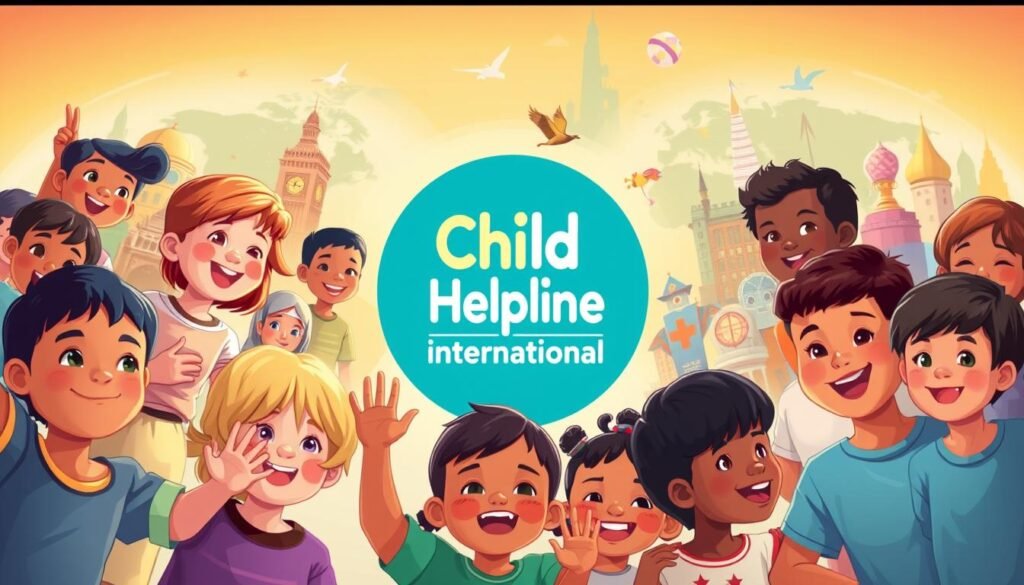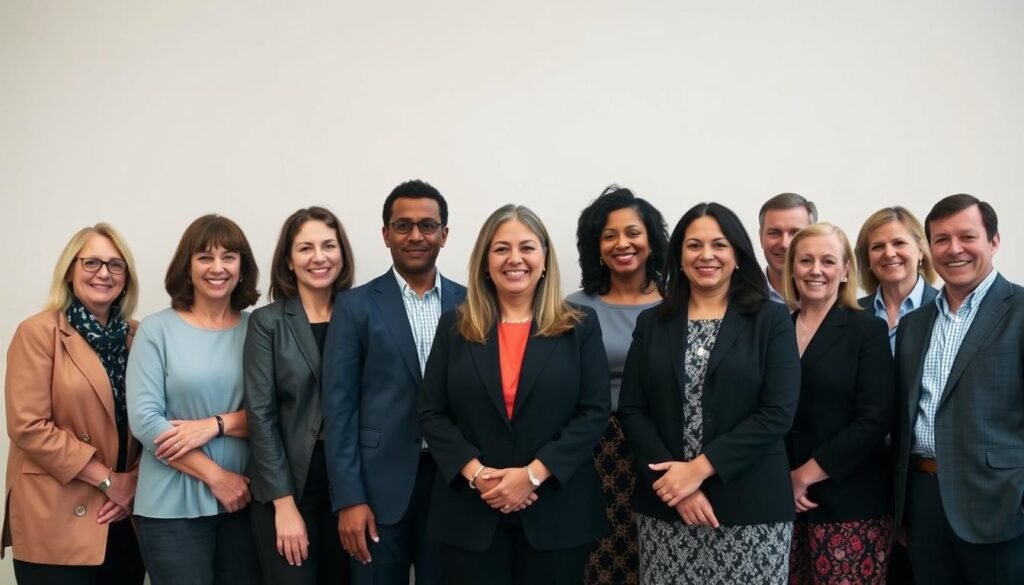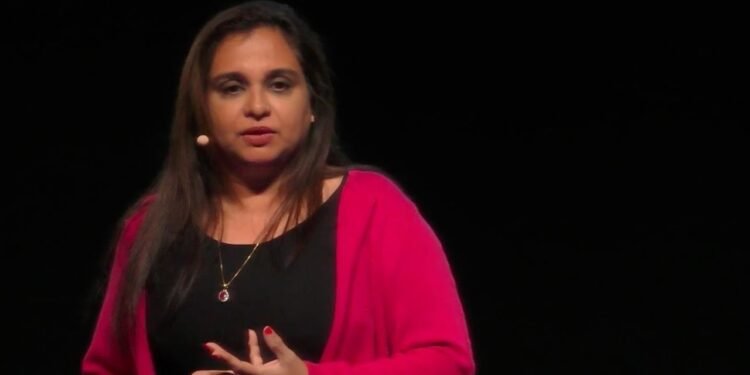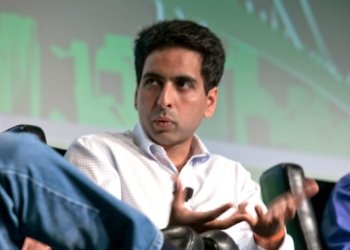More than 140 million calls have been answered by a global child helpline network — a scale few social efforts reach. This fact shows how one practical strategy can move systems and save lives.
jeroo billimoria is a social entrepreneur whose work blends on-the-ground service design with policy influence. Her organizations span emergency response, financial education, and youth finance initiatives that reached millions of children worldwide.
Her background in commerce, social work, and nonprofit management gave her a tools-first leadership style. That approach helped teams in Mumbai and New York adapt local solutions into scalable models that engage governments, telecoms, and financial institutions.
Key Takeaways
- Scale matters: networks can answer millions of calls and reach millions of children.
- Practical leadership: combines data, management, and social purpose.
- Cross-sector models: NGOs, governments, and companies can deliver real results.
- Transferable practices: systems-level design allows replication across countries.
- Global influence: work in Mumbai and New York shaped a worldwide agenda for youth services.
Who Is Jeroo Billimoria? Leadership rooted in social innovation
She turned a simple idea—a 24/7 helpline—into multiple organizations that reshape how a country and the sector respond to child risk.
jeroo billimoria founded Childline India Foundation (1098), which allied with India’s Ministry of Social Justice to provide round‑the‑clock emergency help for children.
Her work then spawned Child Helpline International, aggregating 140M+ calls from 133 countries to track trends and inform policy.
Informational overview and scope of impact
She also launched Aflatoun International, which brought financial education to over 8M children in 101 countries, and led CYFI’s global finance campaigns until 2019.
The model blends service delivery with evidence generation so ngos, telecoms, ministries, and multilateral groups can coordinate around data.
Key strengths: practical scaling, cross‑sector partnerships, and systems thinking that helps people convert ideas into measurable results for children and street children alike.
Early Life and Education: Foundations of a systems thinker
Raised in Bombay by a family steeped in service, her early life set a clear path toward public-purpose work. A father in accounting and a mother in social care combined practical skills with a commitment to others, and personal loss deepened that resolve.
From Bombay to New York: University of Mumbai, Tata Institute, and The New School
She completed a BComm at the University of Mumbai (1986), an MA in social work at the Tata Institute Social (1988), and an MS in Non‑Profit Management at The New School for Social Research in New York (1992). Advanced study in New York expanded her view of homelessness, policy, and cross‑sector management.
Teaching at Tata Institute and early field experience
As a professor at the Tata Institute Social from 1991 to 1999, she stayed close to field realities. Teaching supported research, documentation, and training that later scaled national programs.
Early frontline work with shelters exposed fragmented services and shaped a focus on collaboration and data. She founded Meljol in 1991 to strengthen citizenship and rights for children, foreshadowing later large‑scale education and finance initiatives.
These academic and field foundations created a systems mindset that prized evidence, disciplined management, and child-led feedback loops.
Jeroo Billimoria on collaborative systems change
Her approach treats change as a group effort, where local actors co-create solutions that shift whole systems. This view moves beyond single programs to practical, repeatable practices that link frontline services with policy.
Principles of collaborative systems change
Collaborative systems change convenes civil society, telecoms, police, hospitals, and ministries to design responses together. In practice, that meant routing emergency calls through MTNL, training responders with lived experience, and creating referral paths through partner NGOs and health services.
Policy influence, government partnerships, and data-driven management
Data from helplines revealed patterns that fed advocacy and policy shifts. Documented trends helped governments act on issues facing street children and adjust national frameworks.
Management practices—monitoring, documentation, and feedback loops—kept quality high and sped learning across organizations.
Building ecosystems with networks and movements
Co-creation scaled into networks and a wider movement of social entrepreneurs and entrepreneurs. Member-driven platforms and country chapters then institutionalized collaboration with government, making replication possible at national scale.
Flagship Initiatives: Childline, Child Helpline International, Aflatoun, and CYFI
Diverse flagship programs created a practical pipeline from crisis response to financial education for children. These initiatives combined local emergency work with global learning and policy change.
Childline India Foundation and the 1098 model
Childline’s 1098 emergency telephone service began in 1996 as a 24-hour toll-free line. Calls routed through MTNL by city zone reached local partners who staffed lines day and night.
Volunteers with street experience handled many calls. That ensured culturally informed responses and fast follow-up. By 2002 the model served 43 cities and logged 2.7 million calls.
Partnerships with the Ministry of Social Justice and Empowerment scaled the service into a national safety net. Police sensitization and hospital coordination improved outcomes for street children.

Child Helpline International and global learning
Child Helpline International grew the concept into a global network. The shared dataset—over 140 million calls across 133 countries—helped shape policy and tailored services.
Aflatoun and classroom-to-community finance education
Aflatoun taught economic rights and savings in classrooms and communities. Programs reached about 8 million children in 101 countries and linked learning to practical savings and agency.
Child and Youth Finance International: legacy and handovers
CYFI (2011–2019) built a global platform for youth finance and inclusion. After accomplishing its goals, it transferred Global Money Week to the OECD and other programs to ITC, Aflatoun, and AFI to ensure stewardship.
Across all organizations, strong management systems and knowledge transfer kept quality high. This coordination let ngos and country partners replicate proven approaches and change world narratives about protection and financial capability, noted in profiles by david bornstein.
One Family Foundation and Catalyst 2030: Incubating systems change
One Family Foundation channels early-stage ideas into practical platforms that connect frontline insight with policy action. The foundation co-incubates pilots and partners with tech groups to turn raw data into advocacy tools.
Incubation model: From Aselo to global collaborations
One Family Foundation helped co-create Aselo with Tech Matters. Aselo aggregates helpline data and makes trends actionable for advocacy and systems change.
Movement building and scale
Catalyst 2030 began as a peer chat and became a global movement. Today it counts 2000+ members, 40+ country chapters, and 90+ collaborations that link social entrepreneurs and governments.
Challenges and leadership lessons
Funding networks remains difficult because donors prefer direct programs over connective infrastructure. The founder one family often stresses decentralization: “let it go, let it flow.”
Result: incubation bridges frontline work and system-level influence. Member-led efforts like Catalyst Market and education collaborations show how shared logistics help entrepreneurs scale solutions while keeping communities and children at the center.
Recognition, influence, and networks shaping the sector
Her career has been marked by honors that link practical programs with broad recognition. In April 2018 she was appointed Officer of the Order of Orange‑Nassau for establishing and leading international NGOs that protect and empower children.

She is also an Ashoka Fellow and a recipient of Schwab and Skoll acknowledgments. These awards signal cross‑sector validation that the models she built are transferable and replicable in any country environment.
Public platforms amplified learning. She spoke at the World Economic Forum and the Skoll World Forum, sharing methods with policy leaders and entrepreneurs.
Her work appears in profiles by David Bornstein, helping readers understand how social entrepreneurs actually change world systems. Metrics and rankings—like Global Journal listings—tie awards to real impact in service delivery across countries.
The combined effect of honors, fellowships, and forums is practical: networks expand, policy alignment grows, and more people and ngos adopt proven approaches for lasting sector change.
Conclusion
The true legacy lies less in programs and more in how those programs became institutional anchors for child protection.
Her portfolio—from national helplines to global finance education—shows how focused design and data build durable systems. Legacy transfers to OECD, ITC, Aflatoun, and AFI help anchor long-term stewardship for millions of children.
Incubation and movement building remain central. One Family Foundation and Catalyst 2030 scale co-created solutions across countries and keep local actors in the lead. This model links frontline work with policy and funding partners.
Actionable lessons are clear: convene diverse actors, collect and use data, embed management discipline, and partner with government. When people adopt these practices, they help change world outcomes for children and accelerate collective impact.
FAQ
Who is Jeroo Billimoria and what is her main area of work?
Jeroo Billimoria is a social entrepreneur and systems-change leader focused on child protection, financial education for youth, and scaling social innovations. Her work spans founding national and global initiatives that partner with governments, NGOs, and communities to build sustainable services and networks.
What are the signature initiatives she founded?
She founded Childline India Foundation, a national 1098 emergency telephone service for children, and helped establish Child Helpline International, Aflatoun International, and Child and Youth Finance International. These efforts combine direct services, capacity building, and global networks.
How did her education shape her approach to systems change?
Educated at the University of Mumbai, Tata Institute of Social Sciences, and The New School for Social Research, she blends field experience with academic insights. Teaching and research at Tata Institute reinforced a data-driven, rights-based approach to social programming and policy influence.
What is Childline India Foundation and how does it operate?
Childline India Foundation runs the 1098 emergency helpline, coordinating with government agencies, NGOs, and local responders to protect children in crisis. It scaled nationally by building partnerships, training frontline workers, and integrating with child welfare systems.
What impact has Child Helpline International achieved?
Child Helpline International became a global network connecting helplines across countries. Together, members handled millions of contacts and shared standards, training, and advocacy to improve child protection worldwide.
What is Aflatoun International and who benefits from it?
Aflatoun International provides social and financial education to children and young people, teaching savings, entrepreneurship, and rights. Programs reach schools and community groups in over 100 countries to build financial capability from an early age.
What does Child and Youth Finance International (CYFI) focus on?
CYFI promotes financial inclusion and capability for children and youth. It organizes Global Money Week and supports policy change, curriculum development, and partnerships that transfer financial skills and resources to young people.
What is the One Family Foundation and how does it support systems change?
One Family Foundation acts as an incubator and funder for systemic social innovation. It supports pilot projects, seed-stage organizations, and partnerships that aim to shift systems rather than only deliver isolated services.
How does Catalyst 2030 relate to her work?
Catalyst 2030 is a global movement of social entrepreneurs and organizations working to accelerate systems change. It emphasizes collaboration, peer networks, and joint initiatives across country chapters and thematic groups.
What incubation models has she used to scale innovation?
Her approach includes co-creation with local partners, iterative pilots, technical partnerships like those with Tech Matters, and intentional handovers to governments or local networks to ensure sustainability and scale.
How does she approach partnerships with governments and NGOs?
She builds evidence-driven collaborations, aligning service design with public systems, advocating for policy change, and training local actors. This reduces duplication and embeds innovations within existing institutions.
What challenges has she highlighted in scaling social change?
Key challenges include sustainable funding, transferring ownership to local systems, balancing central coordination with distributed leadership, and maintaining quality while scaling rapidly through networks and movements.
What recognitions and fellowships has she received?
Her work has been recognized with major fellowships such as Ashoka and Schwab, and national honors including the Order of Orange-Nassau. She is frequently cited in social innovation literature and global forums.
How does data and management practice feature in her initiatives?
Data-driven management informs program design, monitoring, and policy advocacy. Her teams use evidence to refine services, demonstrate impact, and influence government adoption at scale.
How can organizations or individuals engage with the networks she helped build?
Interested partners can join relevant networks, participate in Catalyst 2030 chapters, attend events like Global Money Week, or collaborate with local Childline or Aflatoun partners to pilot programs and share resources.
Where can I read more about her work and case studies?
Search reputable sources such as academic articles from Tata Institute of Social Sciences, coverage by social innovation journalists like David Bornstein, and organizational websites for Childline India, Child Helpline International, Aflatoun International, and Child and Youth Finance International.





